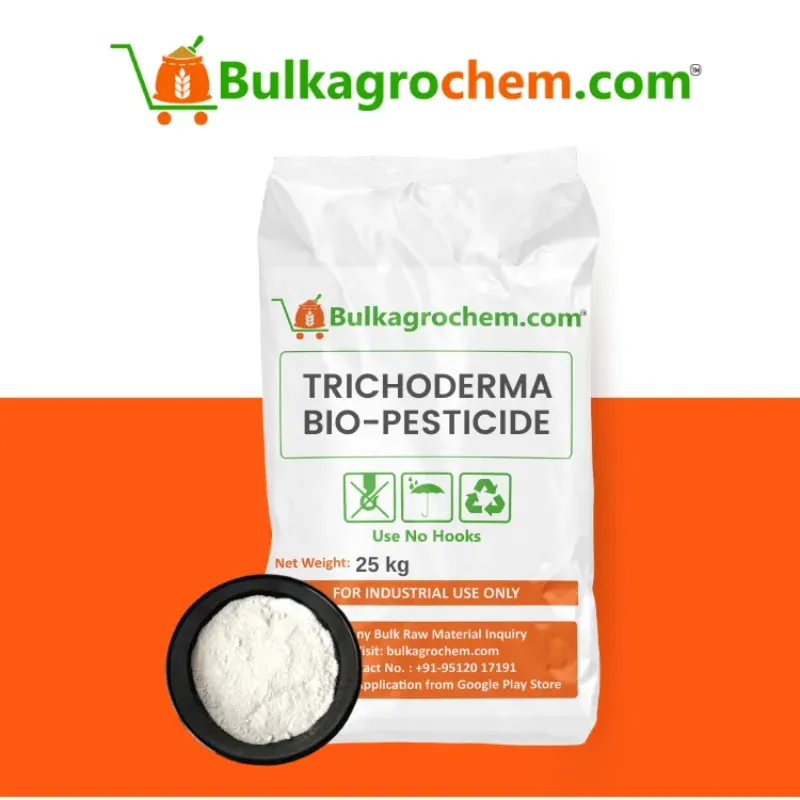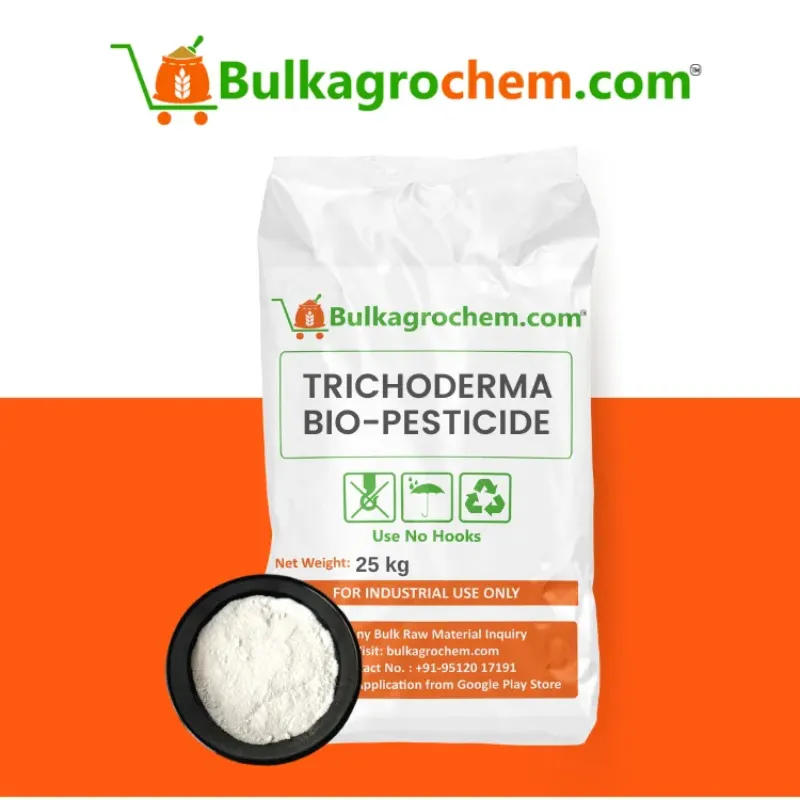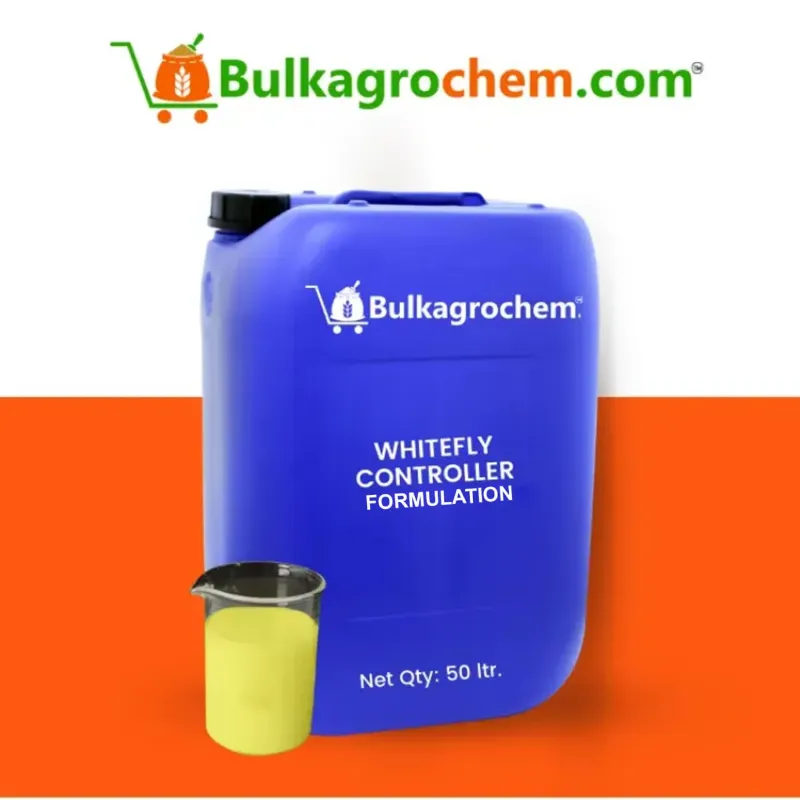What is Trichoderma?
Trichoderma is a genus of beneficial fungi well-known for its role in agriculture and horticulture. It grows in soil, decomposing wood, and other natural habitats, giving numerous benefits to plants through enhancing soil health, combating pathogens in plants, and promoting crop yield.
Trichoderma, through its ability to colonize plant roots and form symbiotic relationships, is the cornerstone of sustainable agriculture. With trichoderma, farmers can reduce their dependency on chemical fertilizers and pesticides, thus making agriculture more eco-friendly and cost-effective. At Bulk Agro Chem, we aim to provide the best quality solutions in trichoderma for modern farming practices.
The Biological Powerhouse of Trichoderma
Trichoderma's functionality is due to its versatility. It acts as a biological control agent that promotes plant growth, suppresses diseases, and enhances nutrient availability. Here's how:
Disease Suppression: Trichoderma fights against plant pathogens through the production of antifungal compounds, outcompeting harmful microorganisms, and parasitizing pathogens directly.
Soil Health Improvement: It decomposes organic matter, releasing essential nutrients back into the soil.
Enhanced Root Growth: Trichoderma enhances root systems, allowing plants to absorb water and nutrients more efficiently.
Stress Tolerance: Trichoderma-treated plants exhibit a higher resistance to abiotic stresses such as drought and salinity.
How Does Trichoderma Work?
Understanding how trichoderma works at the microscopic level explains why it is such a powerful tool in enhancing plant health.
1. Root Colonization
Trichoderma colonizes the root zone (rhizosphere) and forms a protective barrier around the roots. This acts as a barrier to harmful pathogens from entering the plant. Moreover, trichoderma interacts with the plant's root cells to stimulate their growth and functionality.
2. Production of Enzymes and Antimicrobials
Trichoderma secretes enzymes like chitinase and cellulase, which degrade the cell walls of pathogens. It also releases secondary metabolites such as antibiotics and antifungal compounds that can inhibit the growth of pathogenic microorganisms.
3. Induction of Systemic Resistance
Trichoderma-treated plants develop systemic resistance that is similar to an immune response. This makes plants resistant to diseases and pests.
4. Nutrient Cycling
Trichoderma breaks down organic matter, which in turn releases nutrients such as nitrogen, phosphorus, and potassium into the soil, making them accessible to plants. This leads to an overall increase in soil fertility.
Advantages of Trichoderma in Agriculture
Trichoderma is a breakthrough application in agriculture for farmers who want to be sustainable and productive. Here are some of its main advantages:
1. Biological Control of Pathogens
Trichoderma is a very strong natural substitute for chemical fungicides, as it controls the major pathogens such as Fusarium, Rhizoctonia, and Pythium which cause devastating crop diseases.
2. Enhanced Plant Development
Trichoderma enhances plant development through:
3. Eco-Friendly Technology
Unlike chemical treatments, trichoderma is non-toxic to the environment. It does not leave residues in the soil or water, making it a good option for organic farming.
4. Cost-Effectiveness
Trichoderma reduces the requirement of expensive chemical inputs and lowers the production cost of the farmer. Its long-term benefits like increasing soil fertility add more value to it.
5. Increased Crop Yield and Quality
The crops treated with trichoderma produce more yield while ensuring higher quality fruits, vegetables, and grains. This is because the fungi promote nutrient optimization and prevent disease occurrence.
Applications of Trichoderma
The application of trichoderma is versatile enough to apply across different farming systems and crops. Here are some common applications of this product:
1. Seed Treatment
Coating seeds with trichoderma ensures early protection against soil-borne pathogens. It helps in improving the rate of germination and seedling vigor.
2. Soil Amendment
Trichoderma mixed into soil or compost improves soil structure and fertility, besides establishing a healthy microbial ecosystem in the root zone.
3. Foliar Spray
Application of trichoderma as a foliar spray controls the airborne pathogens and increases the systemic resistance in the plant.
4. Root Dipping
Trichoderma provides immediate protection and encourages root development. It is applied by immersing seedlings or cuttings in a trichoderma solution before planting.
5. Integration with Fertilizers
Trichoderma can be used with organic or chemical fertilizers to enhance their action and stimulate balanced nutrient uptake.
Crops That Can Be Used With Trichoderma
Trichoderma is compatible with a variety of crops such as:
Vegetables: Tomatoes, cucumbers, peppers
Fruits: Bananas, strawberries, citrus
Cereals: Rice, wheat, maize
Pulses: Chickpeas, lentils
Ornamentals: Roses, marigolds, chrysanthemums
How to Use Trichoderma Correctly
To get maximum benefits from trichoderma, consider the following best practices:
1. Right Dosage
Applying the right dosage by the manufacturer is essential in order to avoid overuse or underuse.
2. Timing of Application
Apply the trichoderma during the critical growth stages: planting, flowering, and fruiting.
3. Storage and Handling
Trichoderma products must be stored in a cool, dry place away from direct sunlight. Handle it with care to maintain viability.
4. Compatibility
Ensure that trichoderma is compatible with other agricultural inputs like fertilizers and pesticides. Conduct a compatibility test if necessary.
5. Monitor Soil Conditions
Trichoderma works best in well-aerated soils with adequate organic matter. Regular soil testing can help maintain favorable conditions.
The Role of Bulk Agro Chem in Promoting Trichoderma
At Bulk Agro Chem, we are committed to delivering quality trichoderma-based products that would empower farmers to achieve sustainable yet productive farming. Our formulas are crafted to maximize trichoderma benefits; hence, healthier plants with higher yields and better soil conditions.
With our trichoderma solutions, farmers can:
Prospects of Trichoderma in Agriculture in Future
Trichoderma capabilities in agriculture only seem to grow with ongoing research finding new applications and the associated advantages. The new prospects to be explored and implemented would include:
Developing genotypically modified trichoderma strains in the name of capability of target infection or adaptation to extreme environmental pressures.
Convergence with the modern form of precision agriculture that brings together trichoderma with sensors, drones for targeted application in fields
Improved formulation as easier user-friendly, persistent products
Conclusion
Trichoderma is revolutionizing the approach to sustainable agriculture. With its multifaceted benefits from disease control to crop yield improvement, trichoderma is a highly useful tool for modern farming. Healthy plants, better productivity, and a sustainable future will be achieved if farmers adopt this into their practices.
Bulkagrochem
Submit your contact number & get exciting offer
Bulkagrochem.com
Bulk Purchase & Get Bulk Discount
Share your number to receive customized bulk pricing, availability updates, and exclusive offers directly via WhatsApp.

Recommended Products




